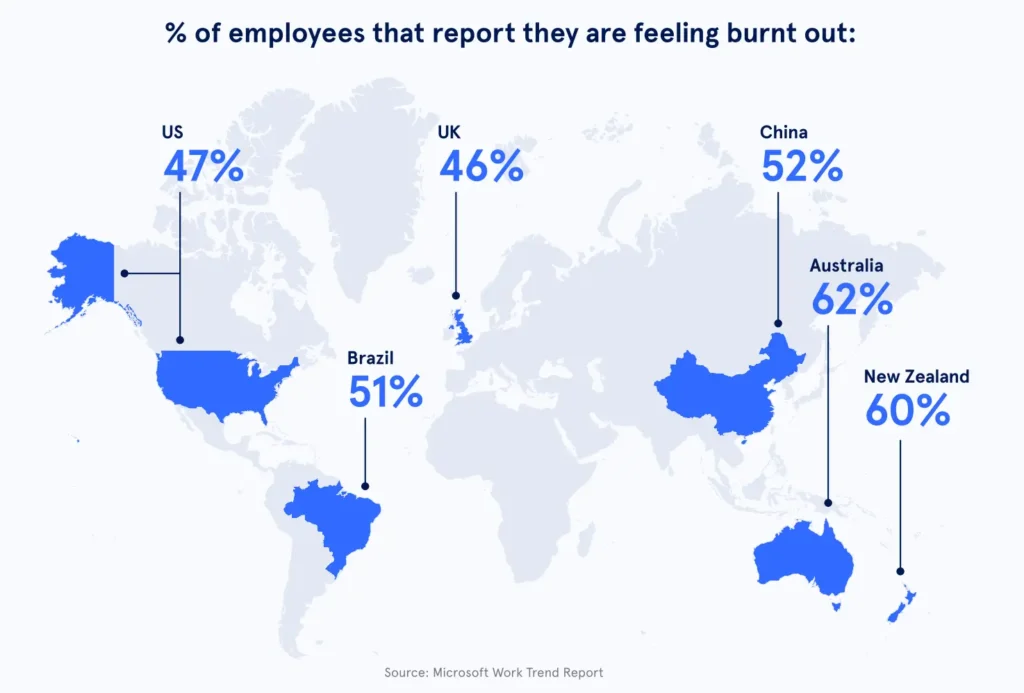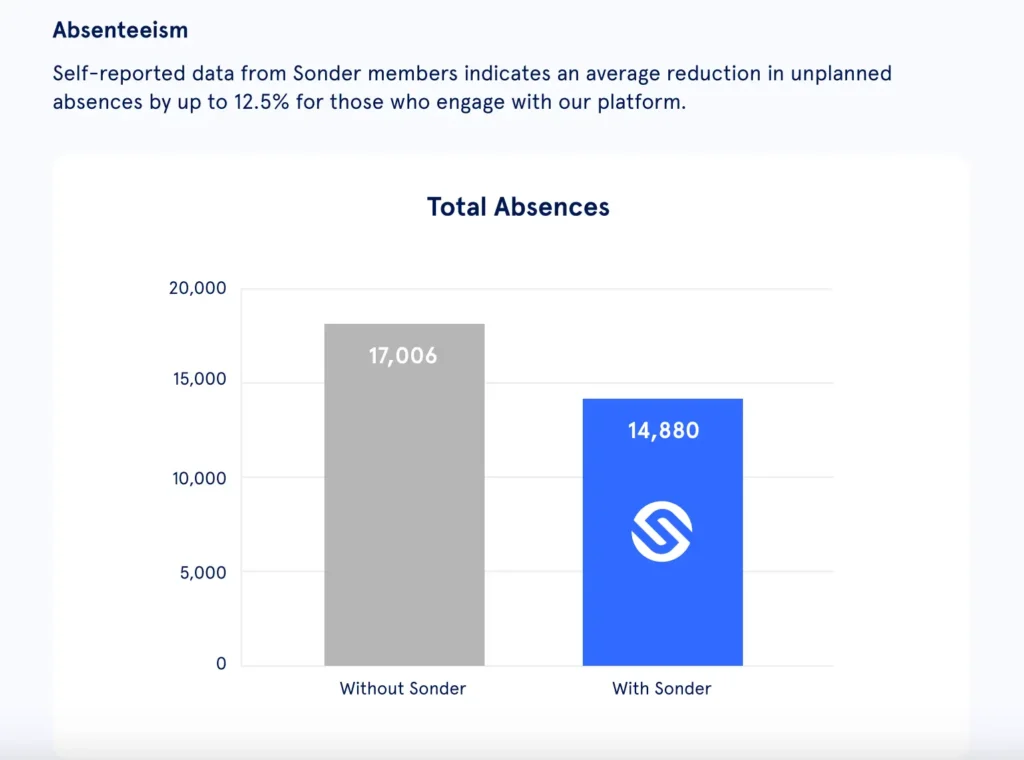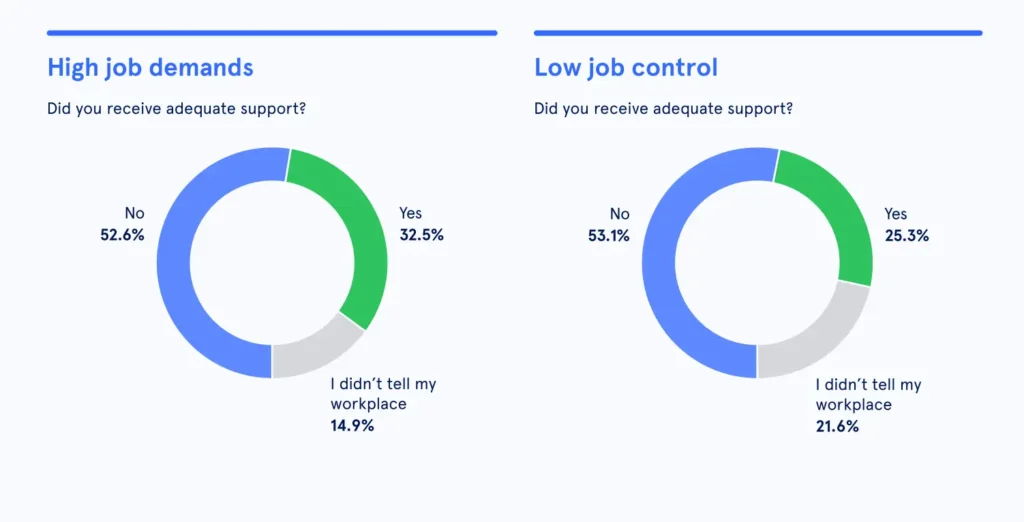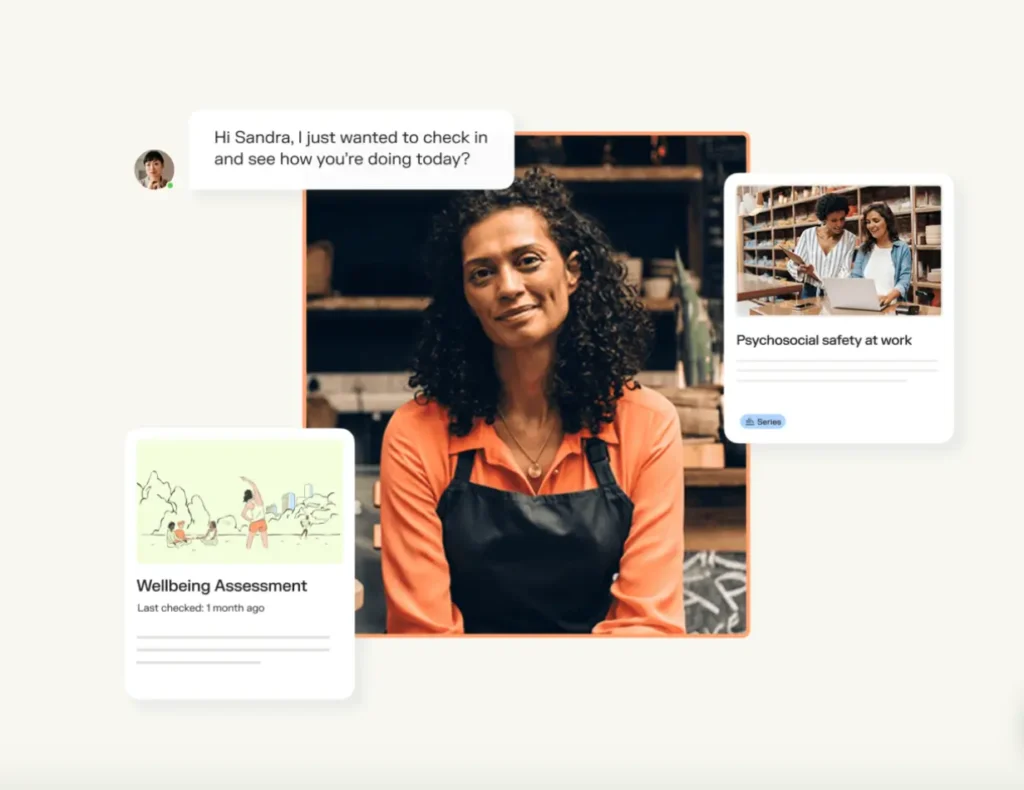Disclaimer: The information contained in this article and on this website is general information only and does not constitute legal advice. Although all efforts have been made to ensure the accuracy and currency of the information presented, Sonder takes no responsibility for any errors or omissions presented. Please contact a legal representative for individual advice.
You’ve built a great team, one that once ran like a well-oiled machine. But recently, you’ve noticed employees missing deadlines, mistakes popping up, and a dip in their mental health at work. You may have spotted that your employees seem stressed, overwhelmed, or disengaged, but you’re not sure why or how to fix it.
These situations are common and can pop up even in the best-performing teams. Often, they signal a shift in job demands, either too much pressure or not enough engaging work.
Every employee faces pressures and expectations that shape their daily experience. But when job demands become unbalanced, they can lead to psychosocial hazards that impact individuals’ wellbeing at work and overall organisational performance.
The Safety Gap Report 2025 by Sonder reveals the potential cost of such negligence, with 50% of workforces disengaged, 40% actively disengaged and either open to or looking for new employment, and 10% passively disengaged.
Whether you’re a leader, manager, or HR professional, understanding and addressing job demands is key to fostering a healthy, engaged, and productive workplace.
To help you get a better handle on this psychosocial hazard, let’s explore what job demands are, why they matter, how to spot the warning signs, and practical strategies to help you manage workloads effectively and support your team before these risks escalate.
What are job demands and why do they matter?
Job demands refer to the responsibilities, expectations, and pressures an employee faces in the workplace. While job demands are a normal part of any role, Safe Work Australia recognises that when job demands become too high or too low, they cross into the territory of psychosocial hazards.
Here are some common situations where job demands may start to pose risks to employees’ psychological and physical wellbeing.
| High job demands include: | Low job demands include: |
|
|
What many employers and leaders often overlook is that these psychosocial risks, such as imbalanced job demands, can emerge at any time. Even more so in high-paced environments, start-ups with limited resources, large companies with blind spots, and where leaders are not equipped to recognise warning signs or address such issues as they arise.
What are the risks of too high or too low job demands?
When job demands become too high or too low, the effects can ripple across your entire organisation. Individually, employees may experience increased stress and a decline in mental health. At a company level, you risk reduced motivation, lower engagement, and potentially losing valuable team members altogether.
Here are some of the common risks that come with imbalanced job demands.
Risk 1. Burnout
- High workloads, tight deadlines, and unrealistic expectations can lead to chronic stress in the workplace.
- A hostile work environment or job insecurity can produce feelings of anxiety and depression.
- Physically demanding work, where adequate breaks are not taken over a prolonged period, can lead to risk-level fatigue.
Sonder’s ‘Battling Burnout’ report found that 49% of employees had ‘often or always’ felt exhausted or burned out in the past 12 months, a clear sign of how common burnout is when psychosocial hazards go unaddressed.
Get Sonder’s Battling Burnout report now

Risk 2. Decreased motivation
- High workloads with little direction or support can lead to employees feeling overwhelmed and stuck on how to move forward.
- A lack of decision authority in senior roles can stifle initiative, ownership, and productivity.
- Prolonged monotonous or repetitive tasks can cause employees to disengage due to boredom or tedium.
Risk 3. Increased absenteeism
- When psychosocial hazards go unmanaged, such as burnout or decreased motivation, they can lead to employees taking an extended period of absence to recover.
- Regular or unexpected absenteeism can place pressure on remaining employees, increasing their workloads and potential for burnout.
According to the Absence Management and Wellbeing Survey, absenteeism costs the Australian economy $35+ billion annually in wages and lost productivity. As organisations focus on retaining top talent and prioritising employee wellbeing, identifying and managing psychosocial hazards has become more important than ever.
Read the Absence Management and Wellbeing Survey now.

How can you identify the signs of too high or too low job demands?
Identifying when job demands are too high or too low is essential for maintaining employee wellbeing and productivity, especially in light of recent research from Sonder, which found that 72% of employees don’t feel completely safe challenging the status quo at work. Meaning issues could be going unaddressed because workplaces are simply not raising them.
Here are several ways to spot the warning signs early and take informed action:
- Consult workers: Take time to speak with your employees and listen with intention. Enquire about their workloads and any challenges they might face. They could raise concerns about timelines, overwhelm, or company culture. This can be done either more informally through one-on-one meetings or through a more formal company survey.
- Notice employee language: Employees may mention feeling behind, tired, worried, or uncertain. While not directly shouting ‘burnout’, this language can reveal risks or hidden hazards already at play.
- Observe behaviour: Employees making multiple mistakes could indicate that the job demands are too high, rather than their competency being low.
- Review available information: Take note of overtime and periods of heavy workload. Consider if they have sufficient support to meet growing job demands, or notice if they appear bogged down in tedious tasks.
- Consider duration: The longer and more often the exposure to high or low job demands, the higher the risk that workers’ wellbeing may be harmed.
- Identify compounding risks: Multiple hazards can interact and combine to create new, changed, or higher risks. For example, unrealistic deadlines could cause employees to skip breaks and work overtime, leading to burnout and absenteeism.
What are some strategies to mitigate job demand risks?
Sonder’s research reveals that 47% of Australian and New Zealand employees are unsatisfied with the wellbeing support offered by their current employer.
But there are practical steps your organisation can take to ensure your people have access to the support and resources needed to make imbalanced job demands a thing of the past.
Here are some practical tips to help you and your leadership team better manage and control job demands:
- Train leaders to lead with empathy and support. Empathetic leadership helps identify when job demands are becoming unbalanced and allows for early, effective intervention.
- Equip team leaders to act early. Provide the tools and training they need to respond quickly and set up support systems before job demands reach hazardous levels.
- Offer role clarity and co-design workloads. Work closely with employees to clarify expectations and redesign workloads in ways that play to their strengths and maintain engagement.
- Maintain ongoing workload management. Regularly review workloads with senior-level involvement to ensure they remain manageable and aligned with team capacity.
- Consider after-hours support. Offering access to mental health professionals outside regular hours can ease internal pressure and ensure employees always have support when they need it.
How to embed these strategies into your organisational culture?
Effectively managing job demands relies on strong leadership, timely responses, and the right systems.
Upskill your leadership team
Sonder’s Psychosocial Workforce Report found that poor leadership support had the largest impact on employees’ output and performance. A powerful strategy for managing psychosocial risks is empathetic leadership. By fostering a workplace of understanding and support, empathetic leaders ensure staff feel supported and safe enough to voice their concerns.
To upskill your staff in such areas, begin with these steps:
- Mentor your team leaders to actively listen to employees’ concerns, validate their feelings, and provide appropriate and timely support.
- Encourage and promote work-life balance with flexible working arrangements.
- Implement “right to disconnect” policies with clear boundaries around after-hours communication and ensure the team is adhering to these policies for their wellbeing.
Be responsive and provide resources
Sonder’s research reveals that 85% of employees who faced poor leadership support spoke up at their workplace but didn’t receive enough help.

Being able to respond effectively when an employee’s job demands become too high or too low is critical. But where do you start?
Consider implementing these structural support methods:
- Set yourself and your team up for success by establishing clear escalation pathways to follow when employees lack necessary resources or support.
- Rather than waiting for employees to come to you, conduct regular audits to determine whether teams have appropriate technology, training, and support to meet their objectives and any shifting job demands.
- Create resource request protocols with defined response timeframes to keep your senior leadership accountable in taking timely action.
Role clarity and collaborative design
Research has found that involving workers in the redesign of their workload to reduce psychosocial hazards can be good for business. Inviting employees to contribute offers autonomy and ownership, opportunities for tailoring more effective support, and a proven pathway to enhancing job satisfaction and overall business performance.
To get started, consider these key points:
- Avoid poor role clarity from the start by ensuring you have developed detailed position descriptions that clearly outline responsibilities, authority levels, and performance expectations.
- Conduct regular role clarity sessions where employees can review workloads, discuss overlapping responsibilities, and optimise systems and support as needed.
- Implement job rotation programmes to prevent monotony, skill stagnation, and tedium. And invite employees to share what other workplace areas they are interested in or passionate about.
Related: Understanding the risk and impact of poor role clarity
Proactive workload management
Effectively managing workloads is central to keeping job demands balanced and reducing psychosocial risk. Proactive workload management ensures your team has the capacity, resources, and support they need to perform at their best, without reaching breaking point.
In practical terms, this could mean you:
- Employ project management tools that help employees manage their workloads and provide real-time visibility into team capacity (building in time buffers for new or difficult tasks to help reduce stress).
- Implement regular workload reviews using objective metrics and ensure your current workforce can meet the job demands at a risk-free level.
- Create “circuit breaker” policies that automatically trigger workload reviews when overtime exceeds predetermined thresholds. Then establish clear protocols for redistributing work when team members are overloaded or absent.
Step up your workplace wellbeing with Sonder

When job demands shift unexpectedly, whether due to high pressure or low engagement, employees need support that goes beyond standard working hours.
After-hours care plays a key role in reducing stress, maintaining wellbeing, and supporting sustained performance.
But recent insights from The Safety Gap Report 2025 highlight a deeper, often overlooked issue: many workers across Australia and New Zealand are facing significant safety risks, and certain groups are disproportionately affected. These risks are not just wellbeing issues; they’re workforce issues, driving absenteeism, turnover, and disengagement.
Sonder’s on-demand support can help bridge this safety gap by providing:
- 24/7 access to personalised care including mental health resources, safety support, and medical guidance.
- Relief for internal teams and managers by easing the burden of being the only line of support.
- A consistent safety net that helps employees manage their mental health in response to fluctuating demands while fostering wellbeing across the organisation.
Want to better understand the safety challenges your workforce may be facing?
Download The Safety Gap Report 2025 to explore the key risks, vulnerable employee segments, and what organisations can do to respond effectively.
Ready to see Sonder’s features in action? Try it now and see for yourself.



